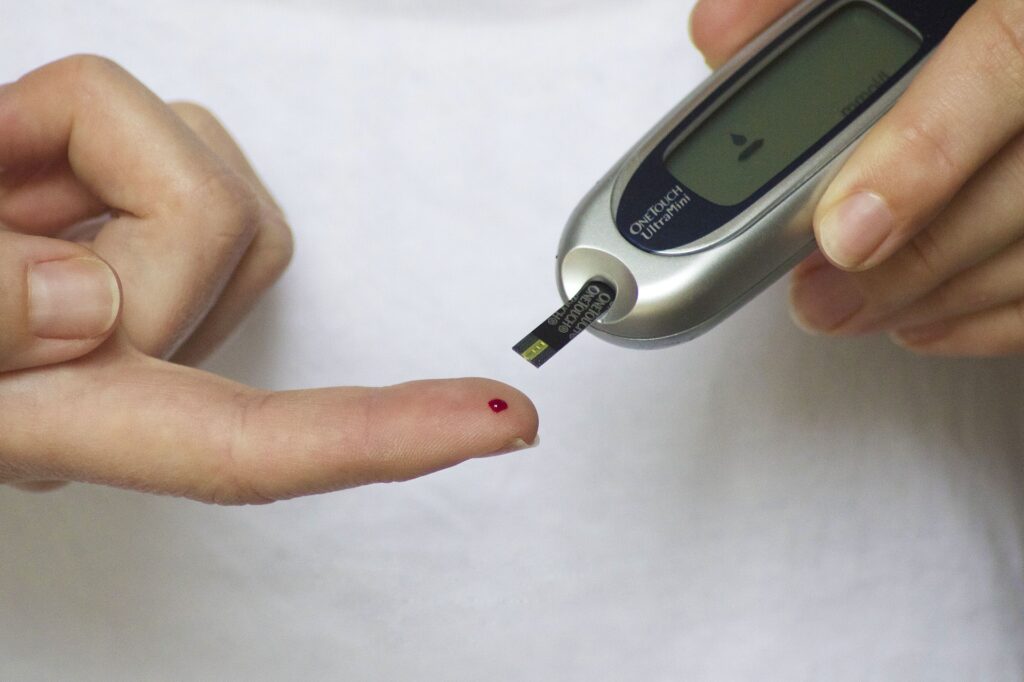Tracking key improvement parameters for type II diabetes

Tracking key improvement parameters for type II diabetes
Multifactorial barriers for treatment of diabetes type 2 adherence, include psychological, individual, family, socioeconomic, and cultural factors. Increased psychological distress has been linked with low adherence behavior among adults with type 2 diabetes. Significant disintegration in glycemic control marks the first years of diabetes for people with diabetes type 1 and 2. Psychosocial burden, especially poor diabetes-specific QOL, is a contributor to problematic glycemic outcomes. Studies have shown that adults with depression, particularly among youth, has been associated with higher episodes of hypoglycemic episodes, hospitalizations, and emergency department visits, more frequent ketoacidosis episodes, and poor control of HbA1c (glycosylated hemoglobin). Health care professionals and families should be aware of depression in people with type 2 diabetes because it can lead to suboptimal outcomes. 3
-
Behavioral Interventions
It has been seen that psychologists’ roles in providing behavioral intervention as part of multidisciplinary diabetes care is essential.17 Diabetes management is complex and constantly changing. One thing that is constant is behavior; behavior changes are involved in the education of the disease itself, medical treatment, regular medical appointments, approaching a new treatment strategy, building healthy relationships and communication with their family and friends. A great number of studies and researches have been made on optimizing the behavioral management of diabetes care. Behavioral family-focused psychoeducational interventions in youth with type 2 diabetes have resulted in better metabolic control and the quality of their life over one year. 5 Evidence proves the effectiveness of diabetes self-management education by improving HbA1 levels at immediate follow up 6 and by promoting better diabetes care and positively influencing glycemia and diabetes-related self-care behaviors, even though it requires significant time in an ongoing commitment and coordination between physicians, nurses, and the family.7
It is very important to build structures that are not based only on healthcare systems, but accessible resources such as infrastructures in the community. It decreases costs, reduces time with physicians, and also because health care systems are not build to maintain a long term follow up, that’s why efforts have shifted towards community resources in meeting these challenges.9 Particularly, community-based healthcare professionals and peer leaders are increasingly utilized to facilitate health education and provide social support.8 Peer leaders, community health workers, health coaches are individuals who share mutual features with a ‘targeted’ group or individual, allowing them to relate to and empathize on a level that a non-peer is not able to.10 13 The usual features involve age, gender, disease status, socioeconomic status, religion and ethnicity, place of residence and culture or education. Peer leaders often own traits such as the ability to develop relationships and enough time availability, along with being empathetic and motivated.11 12
-
Diet, eating habits, and physical activity
Many strategies focus on adherence to blood glucose monitoring, insulin, and oral medications, but eating is as important as the medication for diabetes management to people with diabetes of all ages who often struggle with this issue, which is a challenge itself. Diabetes-related eating habits involve carbohydrate counting, calorie restriction, pre- and post-meal blood glucose monitoring, evaluating blood glucose trends around meals, among other changes. Binge eating disorder can also affect diabetes care, overeating episodes, loss-of-control eating, eating in the absence of hunger, emotional or external eating, and secretive eating. These eating habits lead to weight gain, problematic glycemic levels and increase risk for complications.14 Diet and regular exercising have resulted in a better level of HbA1C.23 The incidence of diagnosed and undiagnosed type 2 diabetes or insulin resistance in the families of adolescents with type 2 diabetes is rising, people in whom type 2 diabetes has been diagnosed, as well as at least one family member is obese. Their lifestyles are characterized by high fat intake, minimal physical activity, and a high incidence of binge eating. These findings indicate that the families of people with type 2 diabetes share many anthropometric and lifestyle risk factors, and that is why the design of treatment programs for people with type 2 diabetes will have to address the lifestyle and health habits of the whole family.18 19
-
Positive psychology and healthy coping mechanism
Psychological, emotional, related behavioral factors, and quality of life are essential in diabetes care, are worthy of attention, and influence metabolic control. A great number of interventions that achieve benefits in these fields provide a base to promote healthily coping.30
Healthy coping in diabetes is an approach that has shown positive results and has received more attention in the past 5 years.27 Problem-solving is a multidimensional construction embracing verbal reasoning/rational problem solving, quantitative problem solving, and coping. Cross-sectional studies in adults have associated constant evidence between problem-solving and HbA1C level, where it was reported that 50% of the adults had improvement of HbA1C level and dietary behaviour.28
“Motivational interviewing” (MI) has shown to be widely used in the management of behavioral problems and diseases. Only a few studies have assessed the effect of MI on type 2 diabetes treatment and this intervention has been linked to improved metabolic status measured by HbA1c.29
Optimizing the consultation of the care team by incorporating behavior change techniques, have heightened levels of physical activity, and improved long-term glycaemic control. 31
-
Couple relationships and their impact on each other health
Diabetes management requires daily care, adherence may be affected by the spouse’s behavior, either directly, through the encouragement of a healthier diet and exercise, or indirectly, through couple behaviors, such as sharing meals. Spousal relations can increase important risk factors for diabetes, including metabolic syndrome and inflammation.23
It was seen that poor marital relations were associated with an increased prevalence of diabetes in men.24 These studies’ results are consistent with prior research made in health and marriage, which implies that poor marital quality may be a unique risk factor for diabetes type 2. On another study, it was seen that when one spouse has metabolic syndrome, his or her spouse has roughly a 30% greater chance of also having metabolic syndrome and there was significant marital concordance of the MES in Koreans, which suggests mutual environmental factors are involved in the development of the MES.25
Even though diabetes is mostly seen as an inherited disease, to measure the importance of socio-environmental factors it has been assessed diabetes concordance in spouses (that is, biologically unrelated family members), and when one partner has a history of diabetes, the spousal risk for diabetes is increased 26%; recognizing shared risk between spouses may improve diabetes detection and motivate couples to increase collaborative efforts to optimize eating and physical activity habits.26
Targeting screening or marital behavioral interventions in people with diabetes, marital quality, and marital closeness could provide more information that would enhance treatment recommendations and may be beneficial for following up on the disease.
- Technology interventions
Delivery of behavioral interventions via the internet is an area of development.14 15 Uses of technology in diabetes are flexible, innovative, and accessible approaches that are shown to improve both diabetes management and glycaemic level control in this ‘at risk’ population. 16 17
https://www.handicapreview.com/2020/06/causes-and-symptoms-of-a-stroke/




